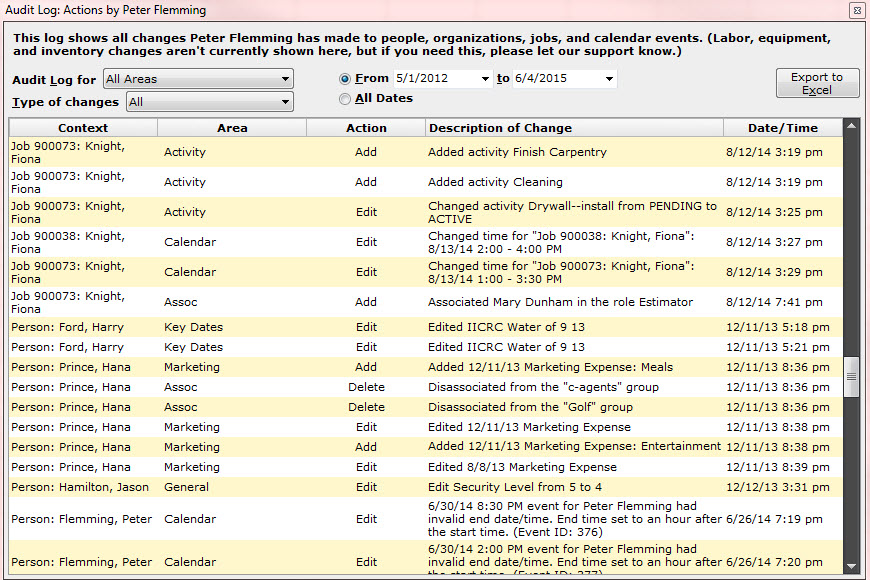

- #Common log file system software#
- #Common log file system iso#
- #Common log file system plus#
- #Common log file system free#
- #Common log file system windows#
#Fields: time c-ip cs-method cs-uri-stem sc-status cs-versionġ7:42:15 172.16.255.255 GET /default.htm 200 HTTP/1.0 Log Everything, Answer Anything – For Freeįalcon LogScale Community Edition (previously Humio) offers a free modern log management platform for the cloud. Here is an example of a W3C log: #Software: Internet Information Services 6.0 Some fields are prefixed with s (server), c (client), sc (server to client action) or cs (client to server action) to show if it’s related to the server or client side. You can configure which fields to include, helping to reduce the size of the log files and keep only relevant information.
#Common log file system windows#
The W3C Extended Log File Format is a highly customizable log format used by Windows IIS servers. The log also contains the field names, making it much easier for log handlers to parse all the fields properly. The beginning of the log contains information regarding the version, date, time, software, and any relevant comments.

Fields are separated by white space, and a hyphen represents a missing field. ELF logs contain data relating to a single HTTP transaction. It is similar to CLF but contains more information and flexibility over which fields are used. The Extended Log Format (ELF) is used by web applications.
#Common log file system plus#
Each line in the log file includes:Ī hyphen is used to represent a field that doesn’t contain data for that event, and a plus (+) sign represents unsupported characters. It’s a standardized, text-based log file with a fixed format, which means you can’t customize the fields. The NCSA Common Log Format (CLF) is one of the oldest log formats used by web servers. Here is an example entry that uses CEF: CEF:0|Trend Micro|Deep Security Manager||600|User Signed In|3|src=10.52.116.160 suser=admin target=admin msg=User signed in from 2001:db8::5 CLF The rest of the log message comprises additional custom fields to enrich it.
#Common log file system software#
The header includes the CEF software version, device vendor, device product, device version, device event class ID, name, and severity. The prefix contains the timestamp of the event and the hostname. Developed by ArcSight Enterprise Security Manager, CEF is used when collecting and aggregating data by SIEM and log management systems.ĬEF logs use UTF-8 encoding and include a common prefix, a CEF header, and a variable extension that contains a list of key-value pairs. Process Name: C:\Windows\System32\lsass.exeĬommon Event Format (CEF) is an open, text-based log format used by security-related devices and applications. Below is an example of a structured log file: [ Most log management systems have pre-configured parsers built in and can easily ingest structured log formats. They may also be joined with an equal ( =) sign (for example, name=Jane or city=Paris). Fields are sometimes separated by a character such as a comma (as in CSV files), space, or hyphen. Structured log formats have a clear, consistent pattern and can be read by humans and machines. Log files come in structured, semi-structured, or unstructured formats. Structured, semi-structured, and unstructured logs For hardware devices, manufacturers usually define the log types to be used. Sometimes, the application gives the user a choice of format (for example, JSON or CSV).
#Common log file system iso#
Special fields, like timestamps, are usually in predefined formats (such as ISO 8601, which would be displayed as 15:21:00.000).Īpplications usually define their available log format(s). Log formats can also define the fields contained within the log file and the data types for those fields.

Whether the log contents are structured or unstructured.A Brief Introduction to Log FormatsĪ log format defines how the contents of a log file should be interpreted. In this article, we’ll discuss general log formats and then cover some of the commonly used log formats across IT systems. This means you can search, analyze, and correlate data from different systems to find trends, create dashboards, and even trigger alerts to improve your business processes. To fully utilize your logs, you need a robust log management system that can cope with the various structured and unstructured formats they come in.Ī well-designed log management solution will ingest, parse, and store logs-regardless of their formats. Logs are an essential component of any IT system, helping you with any and all of the following:


 0 kommentar(er)
0 kommentar(er)
